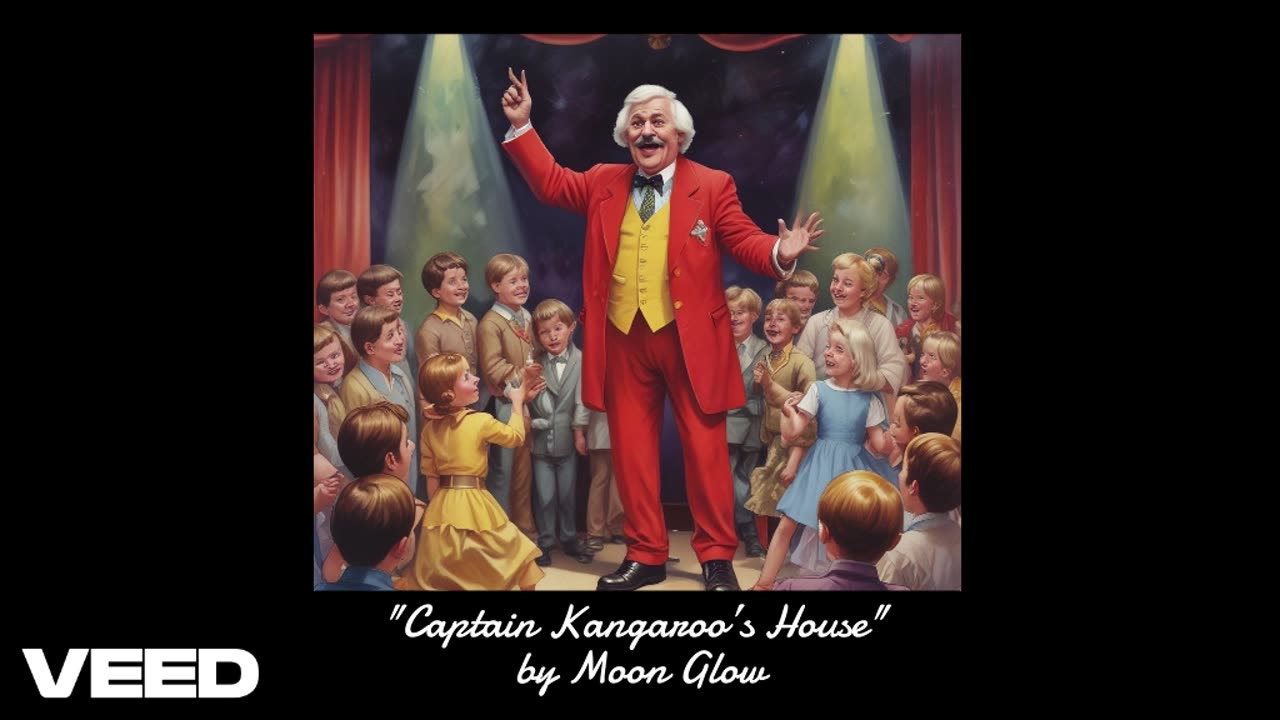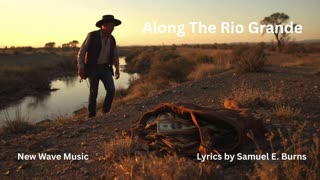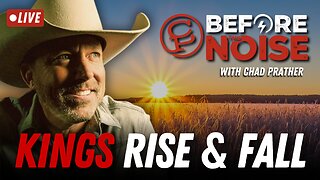Premium Only Content

"Captain Kangaroo’s House" by Moon Glow
"Captain Kangaroo’s House," crafted by Moon Glow with lyrics by Samuel E. Burns, is a nostalgic and heartfelt ode to the beloved children’s television show, Captain Kangaroo. The song captures the magic of childhood mornings spent in front of the TV, where imagination and wonder came alive through the Captain’s whimsical world. With vivid imagery and a warm, reflective tone, the lyrics transport listeners back to a simpler time, evoking a sense of joy and innocence that resonates deeply with those familiar with the show.
The song’s structure is straightforward yet effective, with verses painting vivid scenes of the show’s iconic elements—the Captain’s jingling keys, Mr. Bunny Rabbit’s mischievous antics, Mr. Green Jeans’ gentle presence, and Mr. Moose’s playful humor. The recurring chorus, describing the “house of treasures” where “dreams and laughter blend,” serves as a poignant anchor, reinforcing the theme of a magical, ever-welcoming space. Burns’ lyrics shine in their ability to weave specific details—like the “balls come tumbling down” from Mr. Moose’s jokes—with universal emotions, making the song both a tribute to the show and a celebration of childhood itself.
Musically, while the review is based solely on the provided lyrics, the words suggest a melody that would likely be gentle and upbeat, mirroring the show’s comforting yet lively atmosphere. Lines like “The kid laughs loud and free, / Joy spinning all around” practically beg for a bright, playful arrangement, perhaps with a touch of whimsy to match the puppets and characters described.
The song’s strength lies in its emotional authenticity. It doesn’t just reminisce; it immortalizes the lessons and joy imparted by Captain Kangaroo, emphasizing their lasting impact with the closing lines, “The Captain lives on. / In our hearts.” This sentiment ensures the song appeals not only to those who grew up with the show but also to newer audiences who can appreciate its celebration of kindness and imagination.
If there’s a critique, it’s minor: the repetition of “The Captain lives on” in the final stanza feels slightly abrupt and could benefit from a smoother transition or additional lyrical context to tie it back to the earlier imagery. Additionally, while the lyrics are rich with references, those unfamiliar with the show might miss some of the charm tied to specific characters like Mr. Green Jeans or Mr. Bunny Rabbit. A brief contextual note in any accompanying material could broaden its accessibility.
Overall, “Captain Kangaroo’s House” is a delightful and evocative piece that captures the essence of a cultural touchstone. It’s a love letter to a bygone era of children’s television, delivered with sincerity and a touch of magic. For fans of the show, it’s a perfect reminder of those mornings spent cross-legged on the carpet, lost in the Captain’s world.
-
 4:38
4:38
New Wave Music
13 days agoAlong The Rio Grande
36 -
 19:05
19:05
T-SPLY
12 hours agoLawmaker Asks If Protesters Want To Join Ice "Resistance"
29014 -
 1:05:40
1:05:40
Chad Prather
16 hours agoHow God Governs History
68.8K16 -
 LIVE
LIVE
LFA TV
12 hours agoLIVE & BREAKING NEWS! | THURSDAY 12/18/25
3,002 watching -
 1:32:36
1:32:36
OFFICIAL Jovan Hutton Pulitzer Rumble
3 hours agoWhat Was Your Trump Takeaway? YOU JOIN ME LIVE!
12.2K4 -
 1:55:42
1:55:42
The Chris Salcedo Show
13 hours ago $7.51 earnedDemocrat Proves We Are Ruled By The Inept & Uninformed
16.3K3 -
 8:34
8:34
Blackstone Griddles
15 hours agoAnnual Holiday Gift Guide | Blackstone Griddles
38.5K -
 48:10
48:10
State of the Second Podcast
22 hours agoThe Quietest Suppressor Ever? PTR’s PIP Tech Explained (ft. PTR)
19.8K -
 23:10
23:10
Demons Row
14 hours ago $7.46 earnedBiker Secrets They Never Say Out Loud (Real MC Rules Exposed)
23.3K6 -
 2:06:19
2:06:19
BEK TV
1 day agoTrent Loos in the Morning - 12/18/2025
18.6K